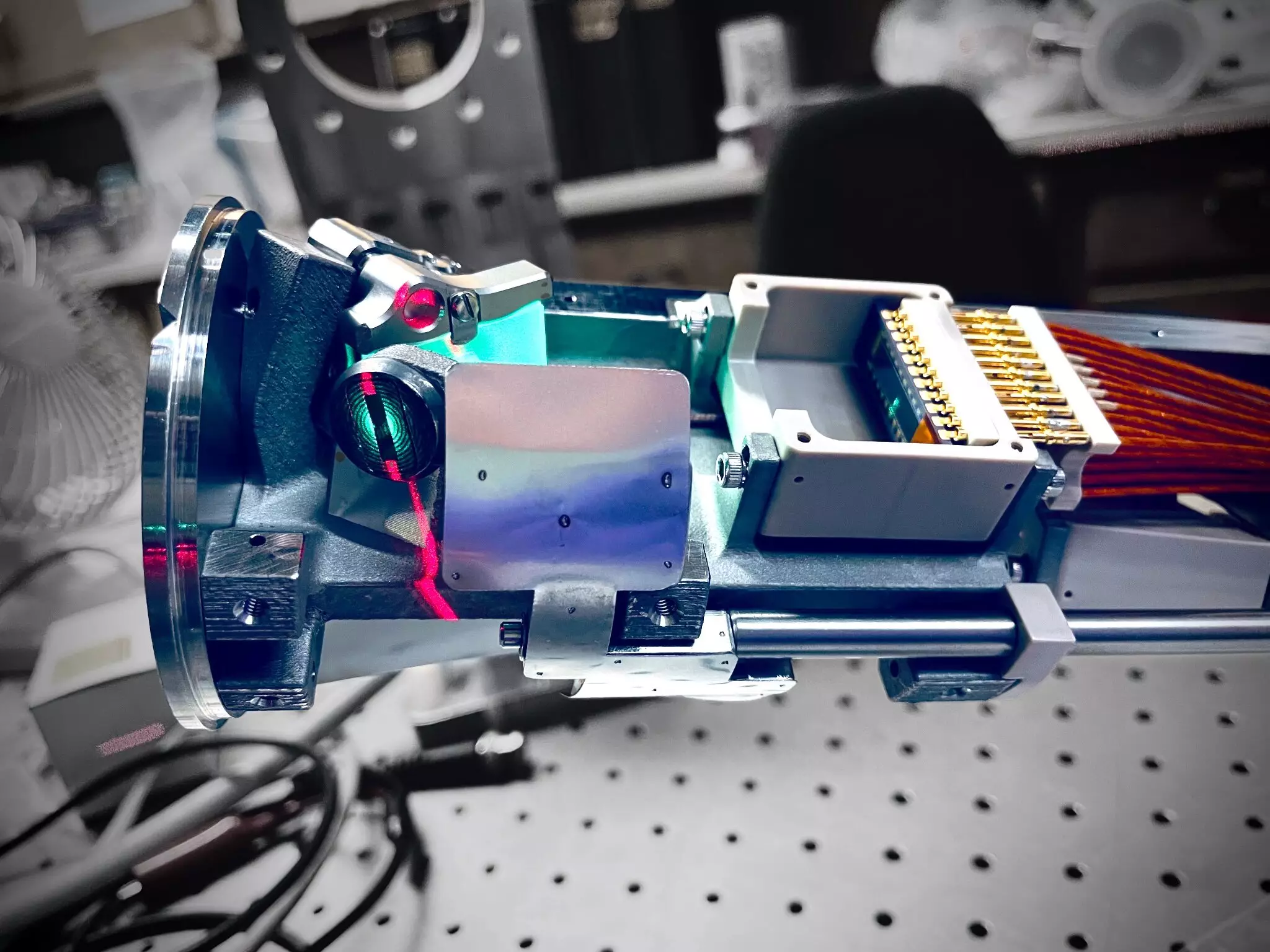The quest for harnessing fusion reactions to generate electricity without producing harmful byproducts has been a long-standing challenge for scientists. Achieving the necessary heat from fusion reactions relies heavily on manipulating the properties of plasma, the fourth state of matter. In a recent development, researchers at the U.S. Department of Energy’s (DOE) Princeton Plasma Physics Laboratory (PPPL) have designed a new plasma measurement instrument called ALPACA. This diagnostic tool has the potential to enhance the heat of fusion reactions in tokamaks and improve the power output of future fusion power plants.
ALPACA focuses on monitoring the light emitted by a halo of neutral atoms surrounding the plasma inside a tokamak device called DIII-D. By analyzing this light, researchers can gain insights into the density of neutral atoms, which is crucial for maintaining high plasma temperatures and increasing the efficiency of fusion reactions. Understanding the process of fueling, where neutral atoms enter the plasma and impact its density, is essential for optimizing fusion power generation.
The three primary sources of hydrogen atoms involved in fueling include initial hydrogen gas puffs, the formation of whole atoms from electrons and nuclei, and hydrogen atoms leaking from tokamak chamber surfaces. Through ALPACA’s ability to collect plasma light at a specific wavelength, known as the Lyman-alpha frequency, researchers can accurately measure the density of neutral atoms. This data is vital for controlling fueling processes and maximizing fusion reaction efficiency.
ALPACA is part of a pair of diagnostics, with its twin instrument named LLAMA. While ALPACA focuses on observing the inner and outer regions of the upper part of the tokamak, LLAMA concentrates on the lower part. These complementary tools provide comprehensive insights into the distribution of neutral atoms around the plasma, enabling precise measurements in multiple locations. The collaboration between PPPL and other research institutions highlights the significance of advanced diagnostics in fusion energy research.
The innovative design of ALPACA, incorporating 3D printing for complex structural components, showcases the cutting-edge engineering expertise at PPPL. The instrument’s hollow chamber and cooling conduits demonstrate the use of technology to overcome challenges in plasma diagnostics. Led by a team of dedicated researchers and engineers, ALPACA represents a significant advancement in fusion research instrumentation.
ALPACA’s development marks a pivotal moment in the pursuit of sustainable fusion energy sources. By providing researchers with a precise tool for monitoring plasma properties and optimizing fusion reactions, this instrument has the potential to revolutionize the field of nuclear fusion. As testing and data collection continue, the insights gained from ALPACA could pave the way for more efficient and powerful fusion energy technologies in the future.


Leave a Reply